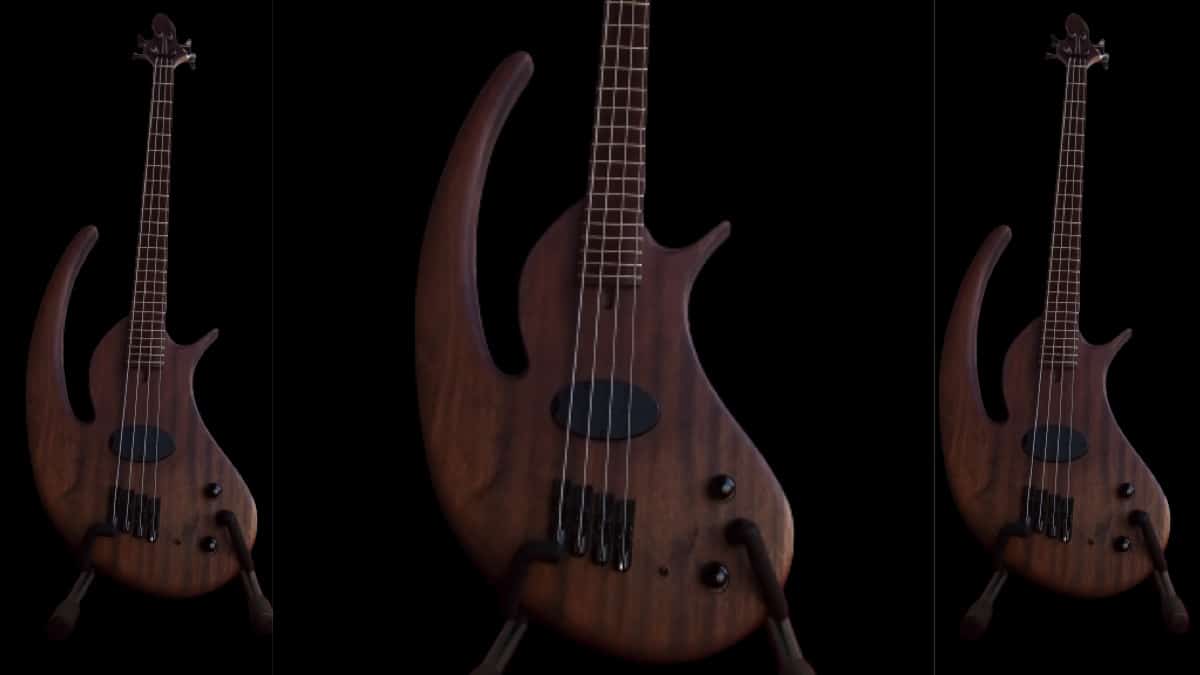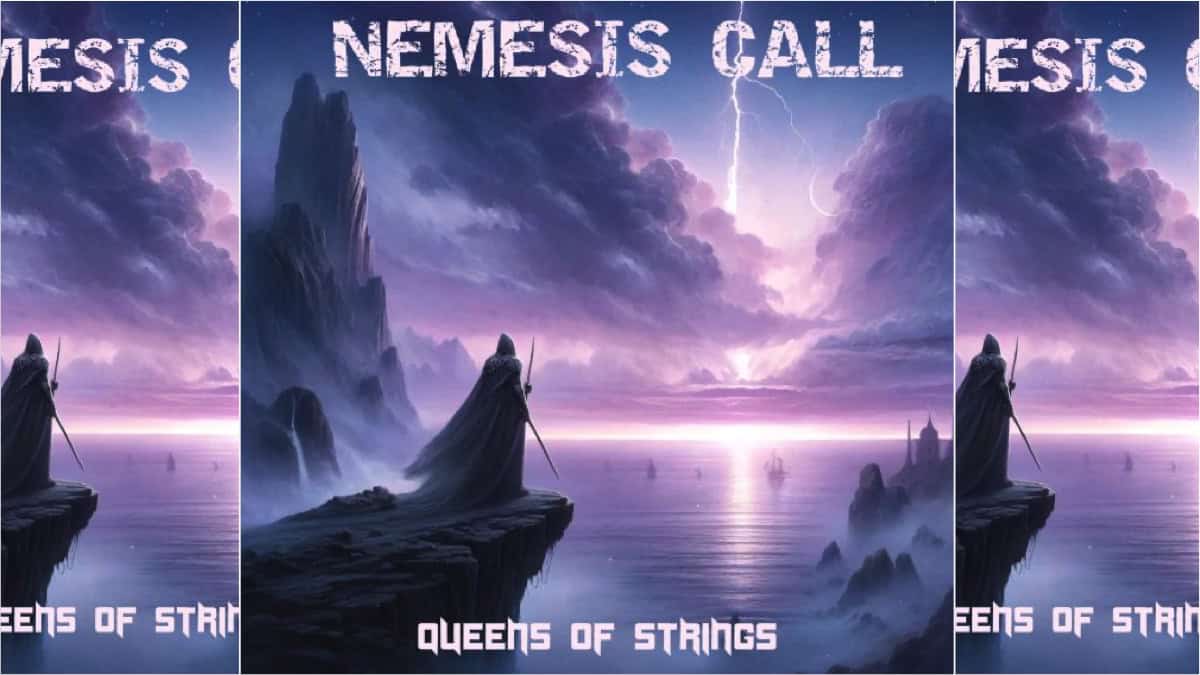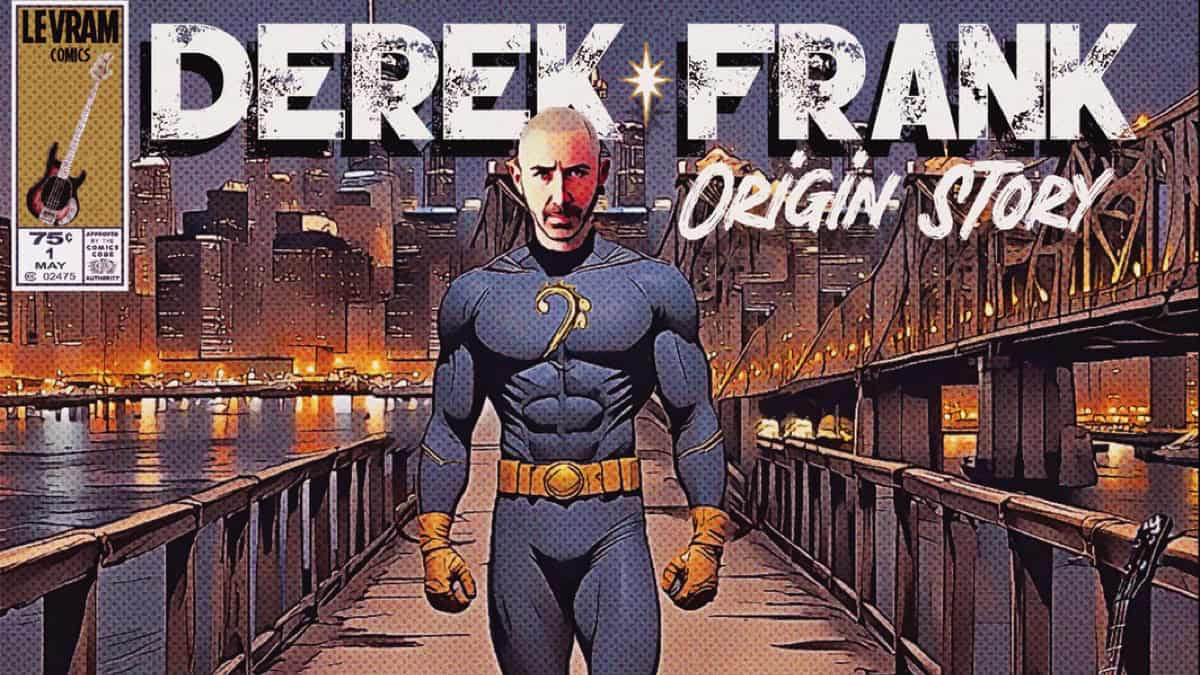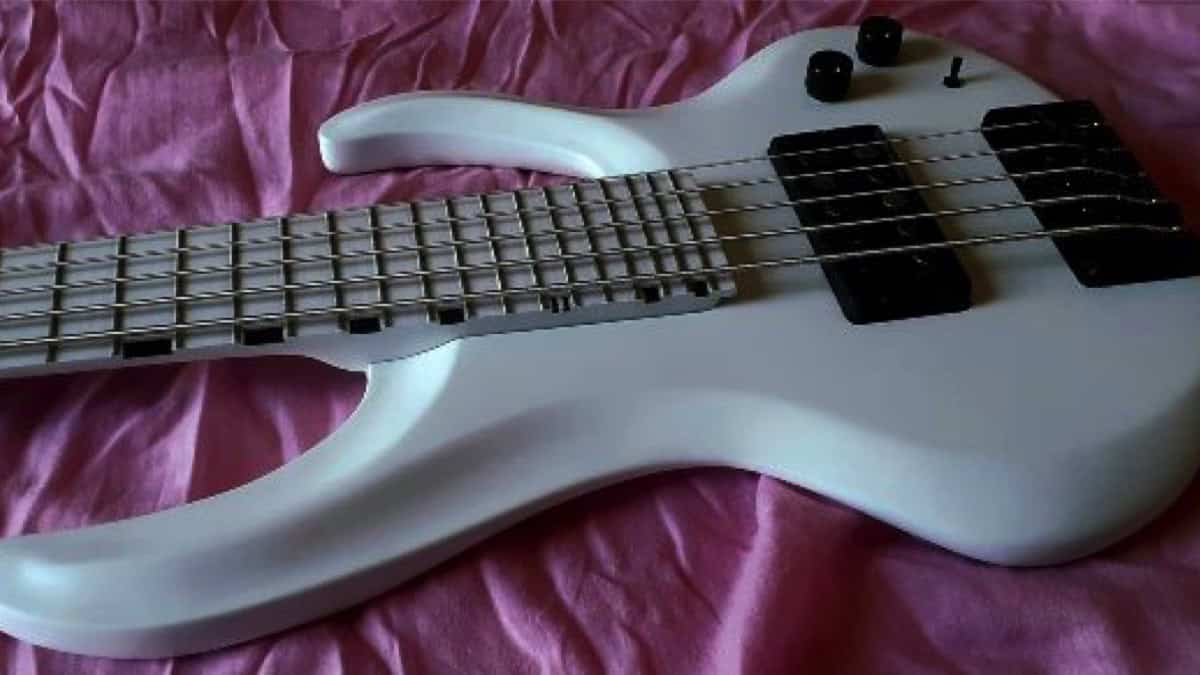Latest
Luthier Spotlight: Bjoern Kroeplin, Plankton Basses

Meet Bjoern Kroeplin, Luthier and owner of Plankton Basses…

In this issue, I have the honor of interviewing Bjoern Kroeplin, Luthier and owner of Plankton Basses.
How did you find your way into music?
I am now 53 years old and come from a musical family. Even as a child I regularly received promo singles from our neighbor who worked at the WDR Radio in Cologne.
I first played the piano and then joined my first band when I was about 15. There I played percussion until the bandleader got a gig in our school. We didn’t have a bass player, so I agreed to learn bass and within a month, bought one in Lübeck and quickly taught myself everything I needed to cut a good figure in front of the 400 people in the school’s sports hall.
Later in the 80s, I discovered Stanley Clarke, Mark King, Marcus Miller, and Defunkt with Kim Clarke. But my favorite bassist is Hellmut Hattler with his virtuoso plectrum bass playing. This is not least because he has bequeathed me his two Glockenklang Boxes, with which I can put all basses through their paces after completion.
I am also self-taught and have always taught myself how to play instruments, including the entrance examination for bass studies in Cologne. I also had piano lessons as a child. What I could advise today would be in any situation: listen, listen carefully, and stay on the ball.
Are you still an active player?
I have a small studio and compose mostly with the bass and then play all the other instruments – visit TRICKYPONY. I am booked as a session bassist here in northern Germany for funk, rock, and jazz.
Tell us about building your first bass…
I’ve had many a bass, but I didn’t like any of them particularly in terms of sound and certainly not in the classical form. So after a long accident with a fractured heel, where I couldn’t walk for a long time, I decided to build my first fine bass at home on a barstool. I bought all parts and tools on the internet and they were delivered to my door.
That must have been about 10 years ago. The result was absolutely sensational in terms of sound and appearance.
This was followed by an electric double bass similar to the one made by the well-known electric double bass player Eberhardt Weber with the Jan Garbarek Group. Here I chose practically only the middle section in the extension of the neck but without the charming, massive, sweeping curves of a babushka like in the Kate Bush video.
The body is made of maple with a neck that you can unscrew. This way you can transport the huge device relatively easily. It sounds like a classic double bass, so everything as it should be.
How did you learn the art of woodworking/Luthier? Who would you consider as a mentor?
Wood is a fantastic material to create sculptural objects. My talent and pleasure has always been design, so it is always easy for me to realise my initially fictitious idea. As a mentor I have the philosophy of Bauhaus and Luigi Colani in mind. The European Nordic designers have created great stylish unique pieces. But also always a bit ahead of the times, such as the case of the Braun Phonosuper SK 4, the Snow White coffin, which was sensational for its time. It was designed by Hans Gugelot and Dieter Rams in 1952, when there was only phono furniture available worldwide. Carl Thompson in New York was the closest to the signature of the new design for basses that I like. How do you choose the woods you want to build with?
I have tried out many things! Just drop different pieces of different woods from a height of one meter onto the floor. Then you will get a first impression of what it means to perceive differences in the wood.
The topic of wood selection resembles a myth deliberately created by the producers called: Tonewood. I can immediately think of the following amusing anecdote that explains a lot; I quote and it was like this: “Taylor builds good guitars because we know how to do it. And to prove it, we built an acoustic guitar out of an old, rotten pallet from the rubbish. The top was made from a wasteboard whose wood type could not be determined. It was glued so artfully from 6 boards that you can hardly see it, and the nail holes … were highlighted with inserted aluminum discs. This Pallet-Guitar was a most acclaimed guitar of the Winter NAMM Show”. Taylor, ISBN 3-932275-80-2.
Let’s talk about pickups…
I have tried American pickups, like the ones in the Fender basses. I have found a great liking for the Bartolini PU’s and have used them. Currently, I work mainly with the DELANO PU’S and the NOLL Electroniks from Germany. I have no comparable electrical solutions at hand. Alembic and Bartolini would be in the USA the closest to my sound ideas; an extremely broad frequency spectrum.
Who were some of the first known musicians who started to play your basses?
None yet, because my basses have only now seen the light. I studied electric bass in Cologne in the 90s and recorded everything on my website myself. You can play the classical styles of your idol with your instrument. However, an instrument would be great, with which modern creative young musicians can start to develop their own sound and their own “handwriting”. I build such basses for you at the Baltic Sea with PLANKTON BASSES, Germany and combine tradition with modernity.
How do you develop a signature or custom bass for an artist?
By having a clear idea of the sound you want to achieve. Then you look inside yourself and think about the materials you want to use to achieve the desired result. I have another company that designs and produces floating pods and rooms. In all my design and creation work I always start by looking at the state of the art and with this knowledge I put myself into my floating tank. There I let the ideas flow and usually quickly arrive at a great experience and start.
What are some things that you are proud of that you would consider unique in your instruments?
In one sentence: The joy of playing… every time I think of something new. The bass himself composes here, just let it out I think every time.
Perhaps in all modesty, the first bass I designed myself was better than any other I have ever held in my hands. Maybe it’s because I’m very open to art, beautiful things, feminine curves and culture. Therefore I know no limits to allow ideas.
Which of the basses you build is your favourite?
Always the one that is still in my head and wants to be built AND then exceeds my own expectations.
Can you give us some advice to young luthiers who are just starting out?
Yes, of course. You have to make it clear to yourself what you want. If you are looking for large quantities, the only thing you have left is industrial production. You will soon notice that you have produced dozens of soulless things that somehow produce sounds. But if you play a precisely handmade instrument, you will soon notice the difference. You feel the love of detail that has been invested. That is the dilemma because every beginner would need a good instrument from the beginning so that the joy of practicing is maintained.
We must not confuse acoustic instrument making with electric instrument making. Physics has its natural limits. Copying a Stradivarius wood by means of artificial aging is quite possible today. In guitar building, it is the symbiosis of the individual components that has a decisive influence on the sound. Generally 50% electric, plus 50% wood selection including all other hardware and construction.
Often underestimated, half of this is the neck construction that gives the sound. That is my opinion, but here everyone has his own philosophy and that is good.
What advice would you give to a young musician trying to find his perfect bass?
The perfect bass does not exist. There is the perfect bass, the perfect instrument just for the musician and his or her individual ideas. There is definitely no such thing as the legendary wollmilchsau.
What is the greatest success for you and your company?
The joy. The joy of the ability to diligently create a finely crafted instrument from the talent of a log.
Are you preparing something new?
Yes, I have only just begun to put all my passion for music into my Bass Boutique Plankton Basses.
Next up is a project with a special material mix. For example, underwater woods from the jungle of the Panama Canal will be used. These timbers were cleared with the permission to widen the channel’s shipping channel for larger container ships. So a diver has to saw off the tree underwater next to alligators using a high-pressure saw. The wood is of a Fanta-layered texture with very high density. I use this in thin strips in the bass necks. An absolute novelty in terms of attack and sustain.
I would also like to contribute to the discussion about carbon in instrument making with one sentence: Carbon fibre is a natural product like wood, but many years older than wood and therefore a fantastic component for my instruments. You will be the first to hear about everything new from me.
What are your future plans?
I would like to find a balance, to introduce my instruments to many musicians, to build up a reasonable distribution network and at the same time keep enough time to experiment creatively for the good cause. The design is almost a pretty dress by itself, but it’s the ingredients that count. I would be delighted if there were a demand in the USA, the country of origin of the electric guitar, for people who want to go my way.
What else would you like to share…
Do not emulate others, find your own style. Stay curious and above all healthy. We can end the interview with Victor Wooten’s sentence: Factor number one for your good tone is always your own fingers first.
Visit online at plankton-basses.com
Gear News
New Gear: Spector Doug Wimbish USA Custom Series Basses

Spector offers Doug Wimbish USA Custom Series basses…
Spector, a leading authority in bass guitar design, unveils two new Doug Wimbish USA Custom Series basses. Synonymous with bass excellence since 1987, Wimbish collaborated with Spector’s USA Custom Shop to create the DW-4 and DW-5 models, echoing the iconic instruments that have been favored heavily throughout his recording and performing career.
These signature basses faithfully replicate Wimbish’s originals, down to the smallest details like neck contours and nut widths. Customized EMG pickups, developed in collaboration with Wimbish, capture the distinctive sound that has shaped his monumental musical impact. These models invite players to explore the feel and response that have defined Wimbish’s signature style over the years.
Available in 4-string and 5-string versions, each model boasts unique features & finish options. The DW-4 comes in Amber Stain Gloss and Black Stain Gloss options, while the DW-5 offers Dark Blue Stain Gloss and Faded Natural Gloss. Every purchase includes a certificate of authenticity signed by Doug Wimbish. Wimbish comments, “Spector took the time to get every little nuance right, and that to me is dedication and being thoughtful enough to know ‘I want to nail it,’ and they did. I’m able to pick these instruments up for the first time and play them like I’ve already had them for years.”
For more information, visit spectorbass.com/doug-wimbish-usa-signature-series/.
Photo: Doug Wimbish, pictured with the new Spector Doug Wimbish USA Custom Series basses
Bass CDs
New Campaign: Alberto Rigoni, Nemesis Call – Queens Of Strings

Italian bass master and composer ALBERTO RIGONI is thrilled to announce his brand new project “Nemesis Call – Queens Of Strings”.
Nemesis Call – Queens Of Strings features a super talented drummer from Japan (TBA) and tons of female guitarists such as SAKI, Giusy Busetto, Alexandra Zerner (TBC) and many many others (TBA). Furthermore, Alberto has also launched a Fundraising Campaign for the project. 20% of the income will be donated to Lega del Filo d’Oro legadelfilodoro.it/it, an Italian association that helps deaf and blind children!
Alberto shares:
“Hello friends and music lovers! I’m Alberto Rigoni, an Italian composer and.. a BASS GUY! Between 2008 and 2024 I released 13 solo albums, spanning from progressive, rock, ambient to funky and experimental music, which also features contributions from musicians such as keyboard wizard Jordan Rudess (Dream Theater) drummer Gavin Harrison (Porcupine Tree) and Marco Minnemann (the Aristocrats), keyboardist Kevin Moore (ex Dream Theater), singer John Jeff Soto (ex Goran Edman (ex Y. Malmsteen), bassists Nathan East, Stu Hamm (Joe Satriani), Nik West (ex Prince) and many others. I’m also bass player for BAD As, Sunset Groove Society, Kim Bingham, The Italians bands and co-producer of Mistheria’s Vivaldi Metal Project.”
Alberto on the new project Nemesis Call:
“Even if my latest album “Unexpected Lullabies”, dedicated to my newborn Vittoria Parini Rigoni, will be released on June 4th, 2024, when Vittoria came to life I felt the need to compose new music (yes, I really can’t stop!!!!!). This time will be quite challenging because I’m willing to release an instrumental ambient/prog/rock/metal album, that will feature a talented and young drummer (TBA) and tons of female guitarists (that’s why I will call the album “Queens of the Strings”) such as Alexandra Zerner, YOKA and many others (TBA/TBC)). It won’t be easy to manage all such great musicians but I will make it!! Are you ready to face a new prog experience? The album will be released in Digipack CD and in high-quality digital format approximately at the beginning of 2025.”
The Fundraising Campaign:
As an independent artist, Alberto is looking for supporters who can help him reach the budget for the production (recordings, mix, mastering, artwork etc.) of this new album and has started this fundraising campaign that will end successfully on October 15th, 2024.
Get further information about Alberto Rigoni’s new project Nemesis Call Fundraising campaign at albertorigoni.net/nemesiscal
Bass Videos
Artist Update With Bassist Derek Frank

Bassist Derek Frank…
Many of you will remember the last time I chatted with Derek Frank was back in 2017. The main thing that impressed me was how busy Derek was and how he juggled playing with many huge acts.
Now, I am happy to hear that Derek launched a new album last March titled “Origin Story” where he digs deep into his roots and pays homage to Pittsburg.
Join me as we get caught up after all these years and hear the details about the new album, how Derek gets his sound, and his plans for the future.
Photo, Stephen Bradley
Featured Videos:
Visit Online:
www.derekfrank.com
www.instagram.com/derekfrankbass
www.youtube.com/derekfrankbass
www.facebook.com/derekfrankbass
Latest
This Week’s Top 10 Basses on Instagram

Check out our top 10 favorite basses on Instagram this week…
Click to follow Bass Musician on Instagram @bassmusicianmag
FEATURED @foderaguitars @bqwbassguitar @lecomptebass @xvector_basses @vuorensaku_guitars @phdbassguitars @meridian_guitars @sterlingbymusicman @ramabass.ok @overwaterbasses
Gear News
New Gear: Alberto Rigoni Signature Bass, the VPR5 by Gaetano Costanzo!

Alberto Rigoni Signature Bass, the VPR5 by Gaetano Costanzo!
Internationally renowned bassist ALBERTO RIGONI (soloist, BAD AS, Vivaldi Metal Project, TwinSpirits, etc.) is proud to announce the release of his signature bass VPR5 made by renowned Italian luthier Gaetano Costanzo!
The bass is entirely handmade in Italy, without the use of CNC or other machinery, and has rather special features. The VPR is a 5-string bass (but also available as a 4-string) with 30 frets, Seymour Duncan pickups, Music Man Alnico style, passive electronics (volume, tone and a switch to select series/parallel/single-coil mode), alder body, and American maple neck and fingerboard. Gotoh tuners that ensure perfect intonation. The bass is totally painted white (nitro finish) but other colors can be requested. The VPR has a weight of about 2.9 kg and suitable for any genre.
For more information contact Gaetanobass77@gmail.com or visit online at www.instagram.com/gaetanocostanzoluthier or www.facebook.com/GaetanoCostanzoLuthier










